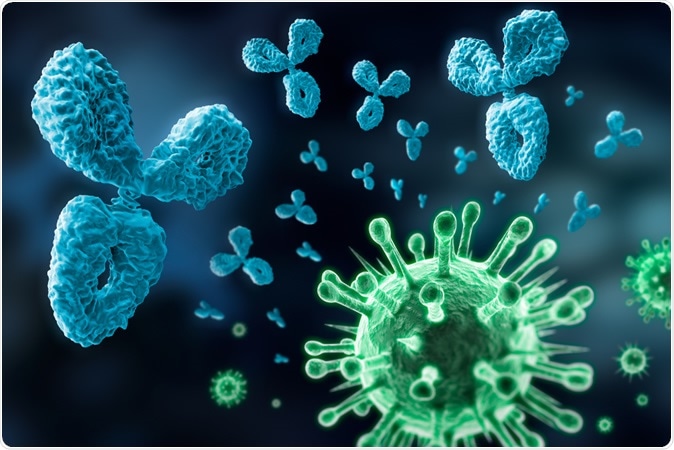The United States has reported the highest number of infections across the globe, with more than 1.81 million confirmed cases and at least 105,000 deaths. The magnitude of the novel coronavirus spread hints that the virus may have started earlier than previously thought.
More than four months into the pandemic that has infected 6.26 million worldwide, the new data is the first comprehensive analysis of when the deadly virus emerged in the U.S.
.jpg)
Novel Coronavirus SARS-CoV-2 Colorized scanning electron micrograph of an apoptotic cell (green) heavily infected with SARS-COV-2 virus particles (purple), isolated from a patient sample. Image captured at the NIAID Integrated Research Facility (IRF) in Fort Detrick, Maryland. Credit: NIAID
Community transmission
The first cases of nontravel-related COVID-19 were confirmed on Feb. 26 and Feb. 28, suggesting that the community transmission was happening by late February.
Between Jan. 21 and Fb. 23, the government had detected 14 cases in the country, which are all related to travel from China. The first local transmission case was confirmed on Feb. 26 in California. On Feb. 28, the second case was reported in Washington.
The government announced a ban on travelers from China on Jan. 31 but was implemented starting Feb. 3. Prior to that, the travelers arriving at U.S. airports were screened for symptoms such as fever and cough. Only later did health officials recognize the virus can be transmitted even before symptoms show up, rendering symptom-based screening imperfect.
Earlier spread
To arrive at their findings, the team analyzed four lines of evidence – virus surveillance, syndromic surveillance, retrospectively identified cases, and virus genome analysis, to shed light on when and where community transmission began.
In the National Syndromic Surveillance Program, health agencies receive real-time data from emergency departments in 4,000 health care facilities across 47 states and the District of Columbia. The team found that there was no increase in emergency room visits for COVID-19 before Feb. 28. Also, retrospective testing of about 11,000 samples did not find positive samples before Feb. 20.
The team also studied the virus RNA from early cases of COVID-19 in the country. They found that the genetic analysis of earlier cases suggests a single line of coronavirus imported from China started spreading in the United States between Jan. 18 and Feb.9, followed by many importations from Europe.
In late February and early March, there were several importations of the virus from Europe to California and the northeastern United States.
"Information from these diverse data sources suggests that limited community transmission of SARS-CoV-2 in the United States occurred between the latter half of January and the beginning of February, following the importation of SARS-CoV-2 from China," the authors wrote.
Asymptomatic spread
The study also highlights the ability of asymptomatic transmission to occur in the community, even before symptoms are detected. Further, the study underscores the importance of an urgent and robust health response during a pandemic, or even in future outbreaks.
The CDC said there is no indication the virus was introduced in the U.S. in November or December.
The health agency also urged the public to practice health measures to prevent the further spread of the virus.
"Steps are underway throughout the U.S. public health system to improve indicators of SARS-CoV-2 activity, including expanding syndromic surveillance among emergency departments and increasing the availability of testing for SARS-CoV-2. Given the probability that most of the U.S. population is still susceptible, sustained efforts to slow the spread of the virus are crucial, including effective contact tracing and nonpharmaceutical interventions, such as physical distancing and source control (i.e., wearing cloth face coverings)," the CDC researchers said.
Antibody testing in the Pentagon
The Pentagon has started to test its troops for the severe acute respiratory syndrome coronavirus 2 (SARS-CoV-2) antibodies, despite CDC warnings.
The CDC warned against testing for antibodies against the coronavirus since it can yield false-positive results.

Antibody and virus - visual concept of the immune system. Illustration Credit: Peter Schreiber / Shutterstock
"We'll be doing antibody testing for critical Tier One unit, such as those who go into subs or the nuclear triad or some of our quick-reaction forces. So, the short answer is, yes, for the antibody testing," Joint Chiefs Chairman Gen. Mark Milley said.
He said that testing in the military force might contribute to the attempts of developing convalescent plasma, which is made from blood from people who have been exposed to COVID-19 and have developed antibodies to combat the virus.
Sources:
Journal reference:
- Jorden MA, Rudman SL, et al. Evidence for Limited Early Spread of COVID-19 Within the United States, January–February 2020. MMWR Morb Mortal Wkly Rep. ePub: 29 May 2020. DOI: http://dx.doi.org/10.15585/mmwr.mm6922e1.